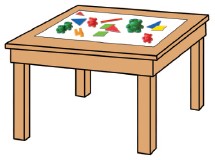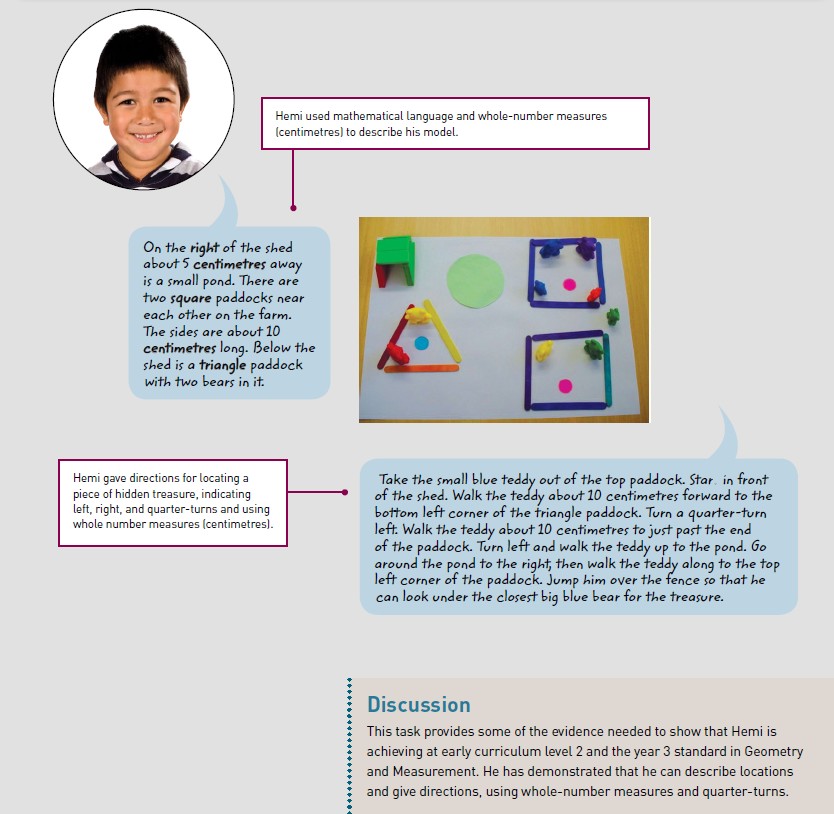
Moving Around: Illustrating the year 3 standard
The task used in this illustration was part of a geometry unit focusing on position and orientation. It was adapted from a task in the Kiwisport Orienteering Manual called Desktop Map Game (p. 28).
The task relates to achievement objectives for Number and for Geometry and Measurement from the mathematics and statistics learning area in The New Zealand Curriculum.
The Task
Moving Around
On a sheet of A3 paper, arrange small bears and other objects (for example, ice block sticks, attribute blocks, small model vehicles) to create a model of a scene.
- Describe your model and where objects are on it.
- Years 1–3: Hide a piece of treasure (such as a counter) under an object on your model and give instructions for moving to it.
Years 4–6: Give directions for moving an object from one point to another on the model.
(Note: Students working within curriculum level 3 should use grid paper with compass points on it instead of a blank sheet of paper.)

Some features of students’ work used to make judgments in relation to the mathematics standards are described below. There is also an illustration of the year 1 standard, an illustration of the year 2 standard, an illustration of the year 5 standard and an illustration of the year 6 standard for this task.
| New Zealand Curriculum: Level 2 | National Standards: After three years at school |
|
In solving problems and modelling situations, students will:
|
|
|
Geometry and Measurement
|
Geometry and Measurement
|
Hover over the image to zoom a section. Click on the image to enlarge it. Click again to close.

PDF of this task and Illustrations of the year 1, 2, 3, 5 and 6 standards (1.86MB)